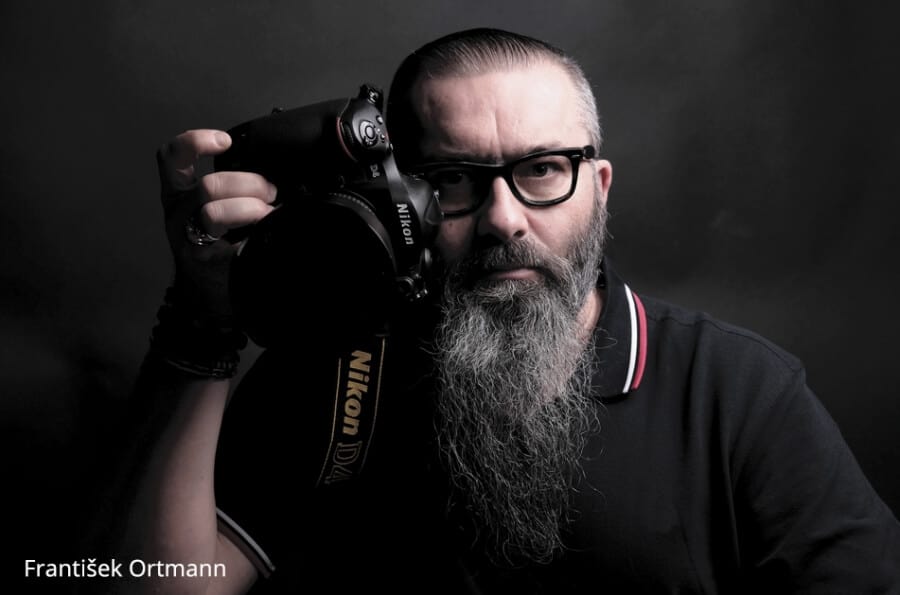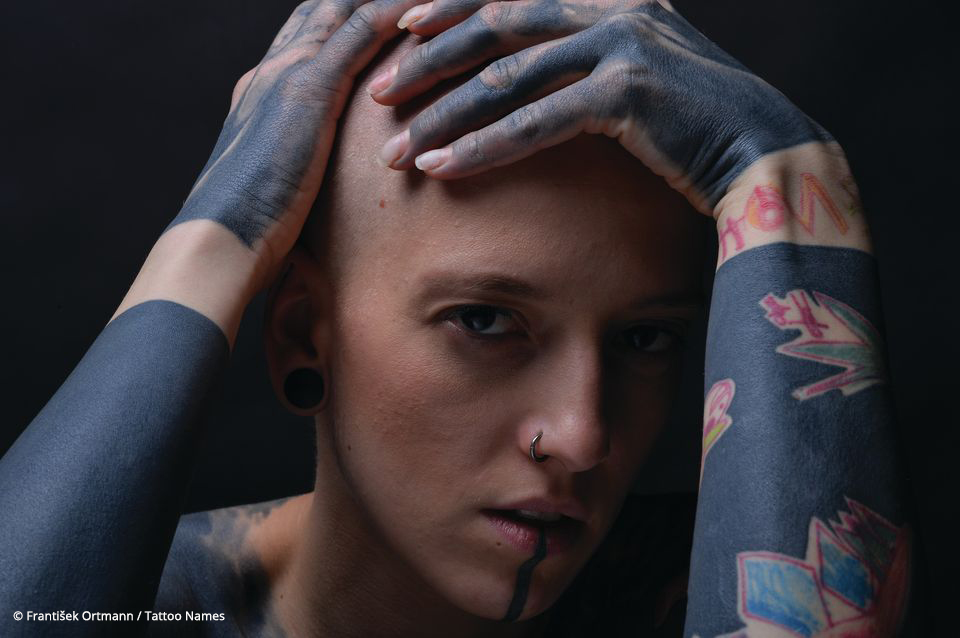Frantisek Ortmann is one of the youngest artists to curate his own exhibitions at the National Gallery in Prague. Photos by Ortmann have graced more than 400 covers of magazines and music albums, and his theatrical sketches are capable of conveying the nuanced atmosphere of opera productions. His studio photos from the Tattoo Names series are not just the pictures of models with artificial patterns on the body, but also a glance into the human soul.
What led you to the craft of photography?
I’ve been doing photography since I was fifteen years of age. To be sure, at that time there was only analogue photography, in other words, everything was being shot on tape or film. After that you had to process the film in the dark room, and then you followed the mysterious process of photographic enlargement. You could never tell what the result was going to be. It was a great time, which became an invaluable school of life. Because of this, nothing can catch you off guard anymore – you are a part of the process at the beginning of which was only a photographic film.
Who or what inspired you?
I have always been inspired by my grandfather, who, sadly, has passed away. He was a Renaissance man who painted pictures, took photographs, worked as a watchmaker and bound books. Those were just incredible works of art; everything was made of leather along with gilded embossment. He was simply a very inspired person. Nowadays, the thing that inspires me is life; I mean everything that surrounds me. Oftentimes I visit exhibitions, and browse the Internet, looking through the works of other artists from all over the world. For instance, I like Instagram service, where I follow several people who have an interesting view of life. There are a lot of different things, we should only take a look around, stop wandering with blinders on our eyes and have an open mind. A wonderful concert or a scrumptious meal can inspire you to create some good photographic work.
Nowadays, high-quality cameras are inexpensive, so more people are able to buy them and call themselves professionals. What is your opinion about this? Isn’t that a sign of the devaluation of fine art photography?
Yes, you are right, today you can buy everything. I started my career at a time when it was impossible to buy something due to shortages of commodities, so purchasing a good camera or lenses was out of the question. Even if you came across something useful it was way too expensive. For example, I bought my first digital matrix (so-called “back”) for more than 1 million crowns, and its resolution was only 3,3 megapixels! Nowadays, every snapshot camera, which one can buy for a thousand Czech crowns, has this kind of resolution. I don’t think that photography is some sort of art. It is just a craft, although a very amazing and creative one. If you don’t know how to handle the thing you have in your hands, how would you be able to create something that is in your mind? It is achieved through trial and error. Chefs can be a good example here: there are a lot of professional chefs, but how many of them can cook a steak exactly the way you like it? Equipment has an important role, though it surely won’t make you a pro. Certainly, you can buy the best work equipment but why would you need it, if you don’t know what a diagram is, or that you can take a photo facing the light, what a color temperature is, and all you actually know is what button to push. I bought my first Nikon (FM2) in 1991 in New York, when I flew to the United States to make a photo shoot with Jaromir Jagr. Before that, I could only dream of having my own Nikon. Back then, there was really nothing for sale here except for Praktika cameras from East Germany. Today I have first-class equipment and if anything crops up, it would be possible to rent the required gadgetry. However, I would like to emphasize the notion that it’s possible to have nothing but the best, but you’ll just push, push and push and still won’t make a single decent photo.
You’ve been taking a lot of photographs in theatres, in-motion. Does motion fascinate you?
Theatre is the major leagues for a photographer, most so-called professionals would “burn” during the first act of a play. A flash or a web application wouldn’t help them in such circumstances. I have worked only in opera for seven seasons, and it has absorbed me so much that I’ve made almost 70 (!) exclusive photo-shoots during various performances. I shoot everything on film because photos made from film, even if it is 30 years old, look like they were processed only yesterday. Today I can’t open files with photos that I made in the early years of digital photography, so they are just irretrievably lost. Apart from that, I’ve been documenting the New Circus Festival Letní Letná for several years, and believe me, you won’t be able to capture those moments, which bind everything together, if you don’t watch the performance until the very end. And in order to catch something that lasts only a second, you have to wait hours and hours.
What kind of inspiration do you get from tattoos?
It is a long story. Back in 2011, I tore my Achilles tendon while engaging in a sports activity (badminton). So, for some time I had to rely on my family and friends. It was a terrible time, I would never wish anyone to go through such an experience – it was just awful. So, one of those who helped me was my friend Lukas Černý, and he has tattoos all over his body. I took photos of him, while sitting in a wheelchair. After I recovered from my injury I got back to the studio, and then an idea popped into my head to make photo portraits of people who are “writing their life story under the skin.” The project, called Tattoo Names, came into existence after one or two such shoots. We’ve already held three very successful exhibitions and a few campaigns for the fans of the project, which amount to 9,000 people just counting the Facebook users. I’ve published several series of cards and, in my opinion, made some people open their eyes. Tattooed people are no longer perceived as criminals. Now the Tattoo Names family (that’s exactly how I refer to the people who were invited to participate in the project) has nearly 150 members, and the circle is still growing. I’ve taken photos of government officials, students, doctors, athletes, entrepreneurs, because the love for tattoos is not limited to any one professional or age group. It is a phenomenon that has no boundaries.
What is your opinion about the modern generation?
It’s great! I’m just fascinated by it! Perhaps, I have been lucky enough to meet creative people who are bursting with energy and enjoying the opportunities that emerged after 1989.
If you could travel back in time and pass a message to yourself in your younger days, taking into account your current life experience, what would you say?
You know, I would probably say, “Live each day as if it were the last day of your life”, which means that you have to live life to the fullest!
Check out the official web site of the project.
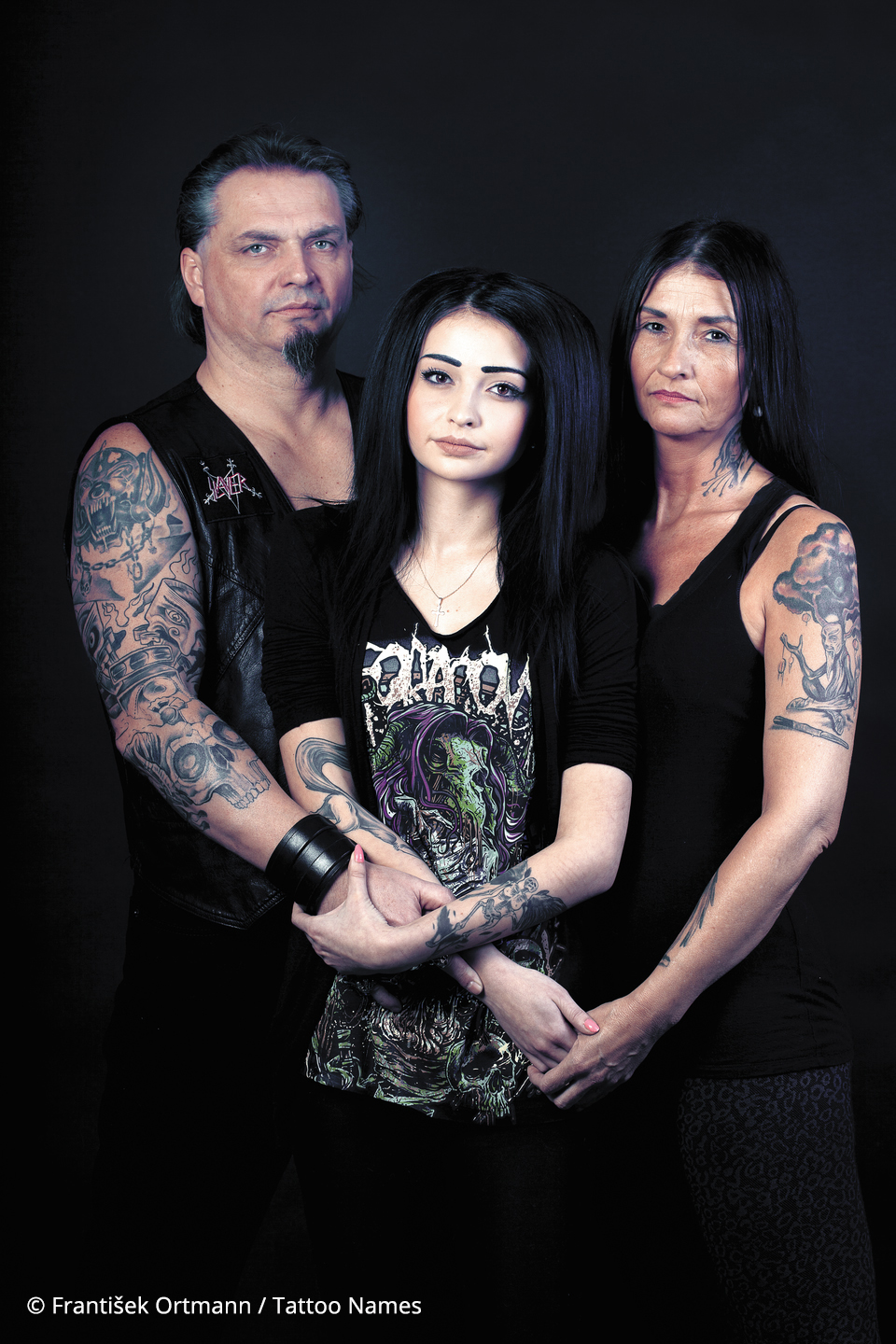
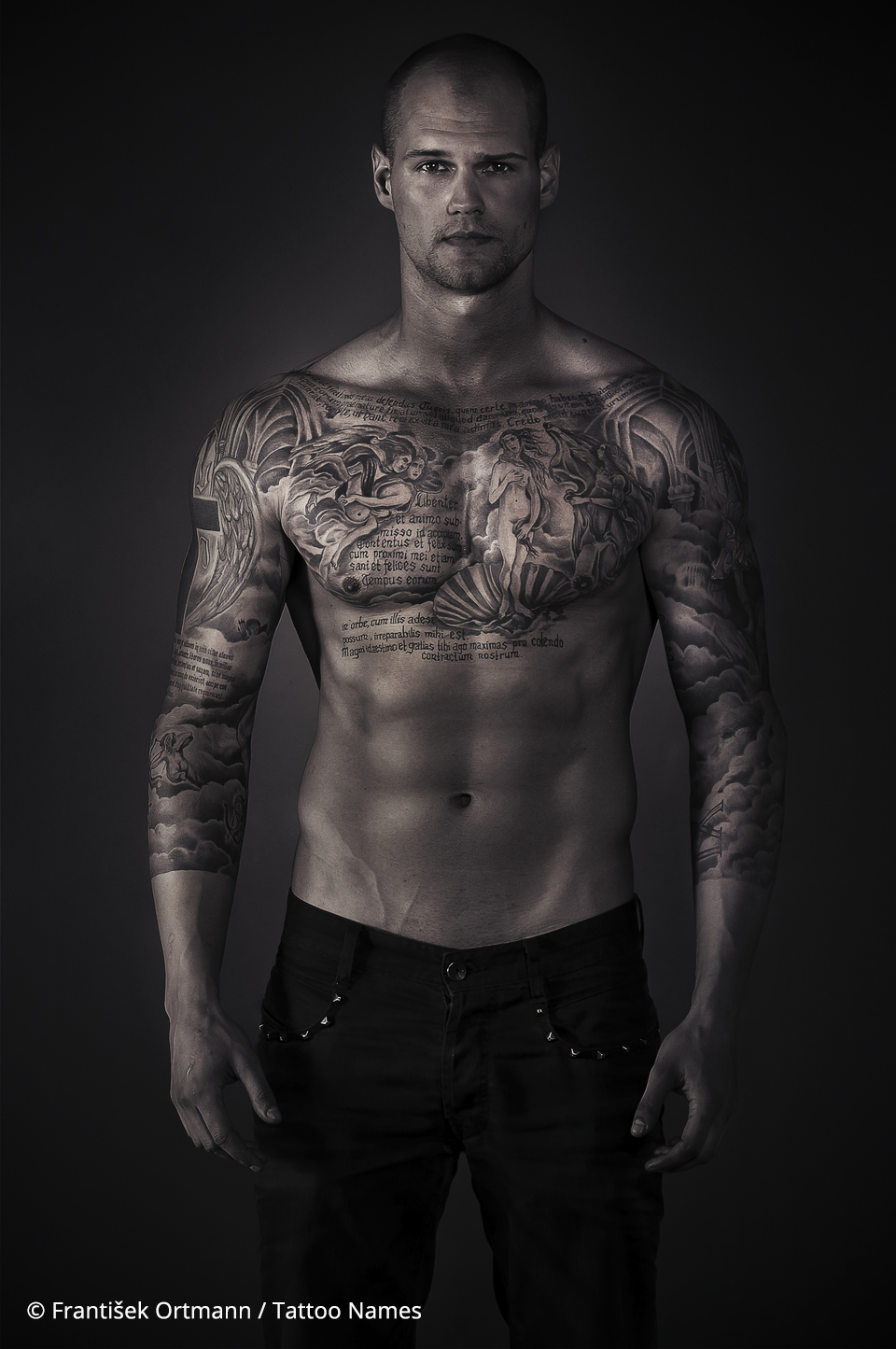
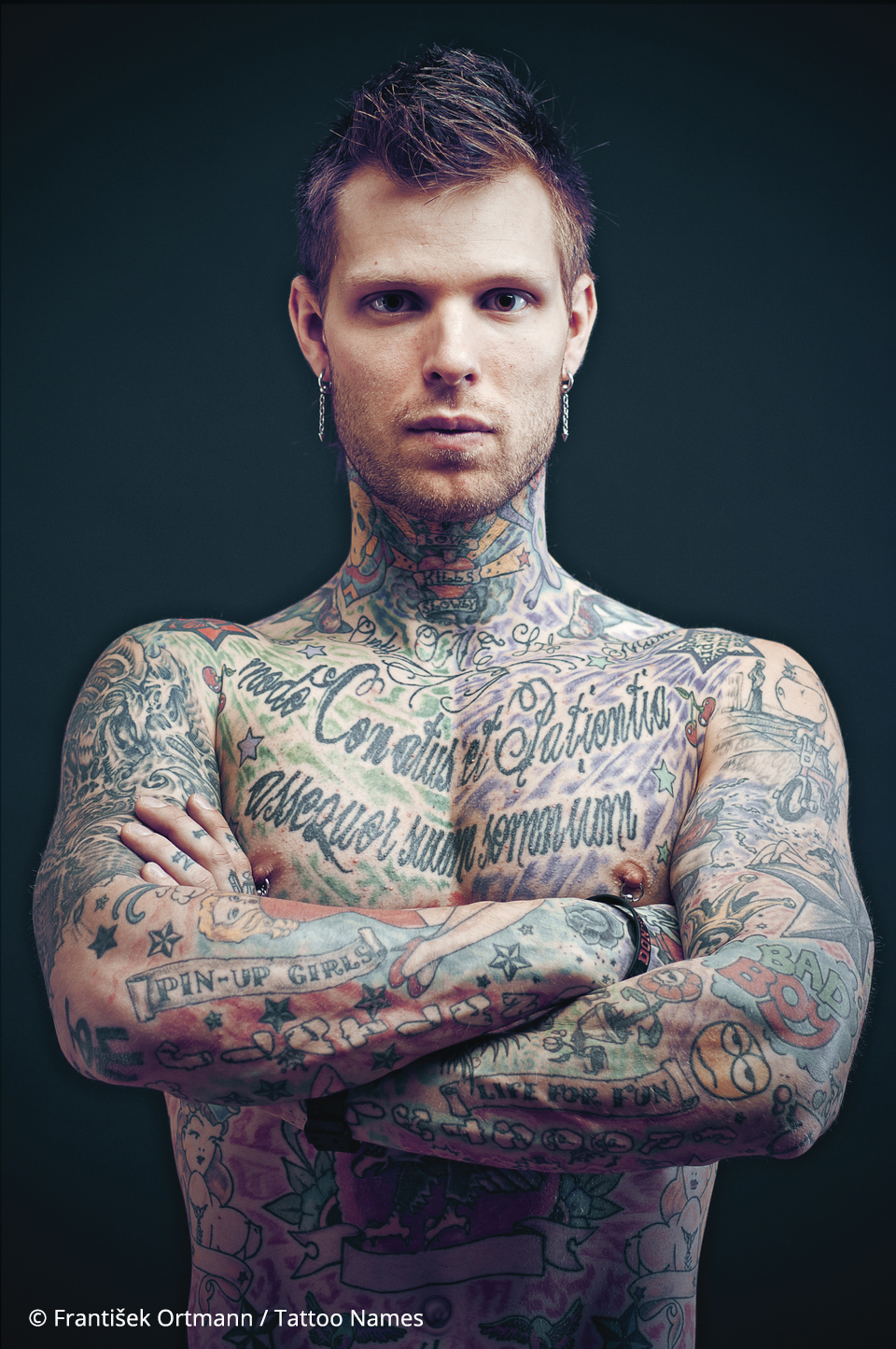
Photos: Frantisek Ortmann
Support us!
All your donations will be used to pay the magazine’s journalists and to support the ongoing costs of maintaining the site.
Share this post
Interested in co-operating with us?
We are open to co-operation from writers and businesses alike. You can reach us on our email at [email protected]/[email protected] and we will get back to you as quick as we can.
